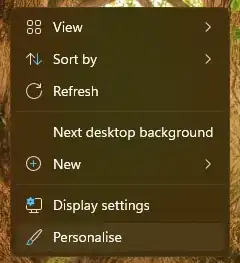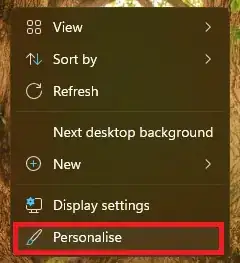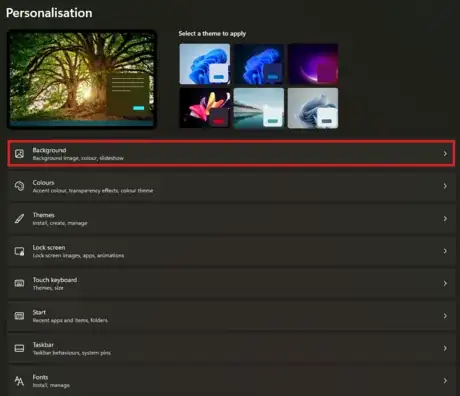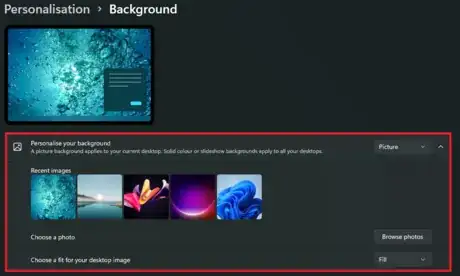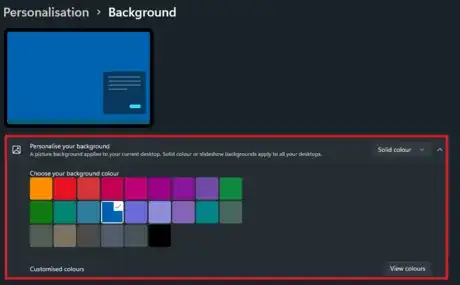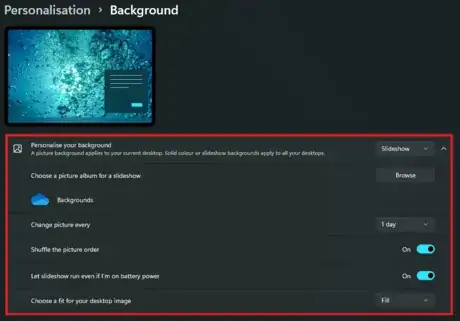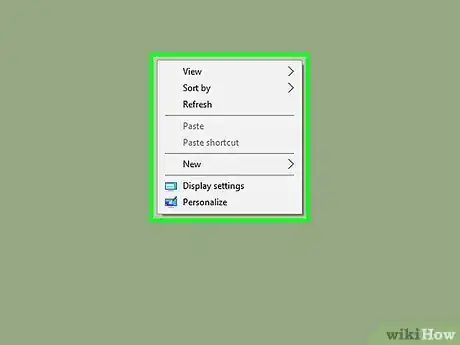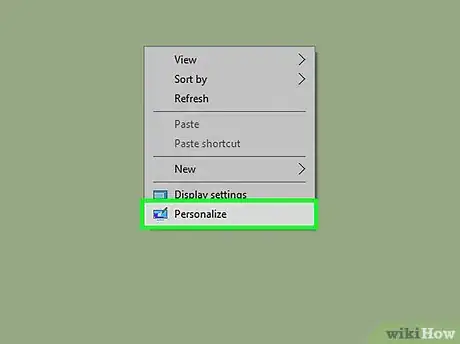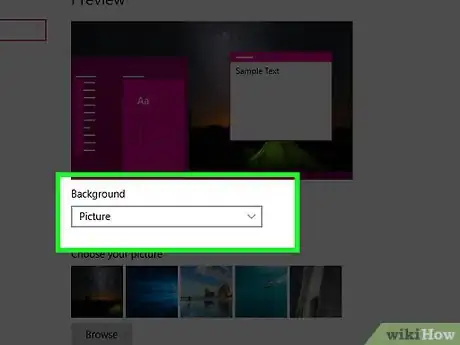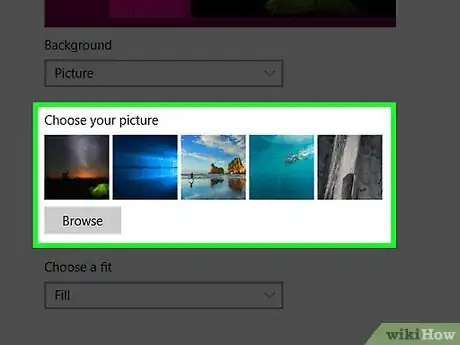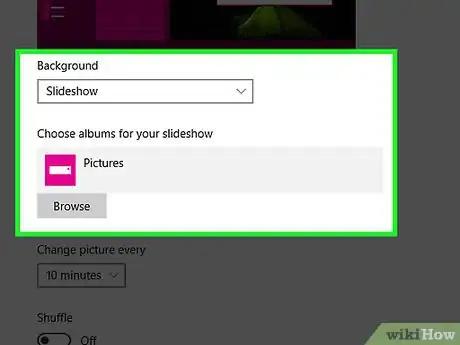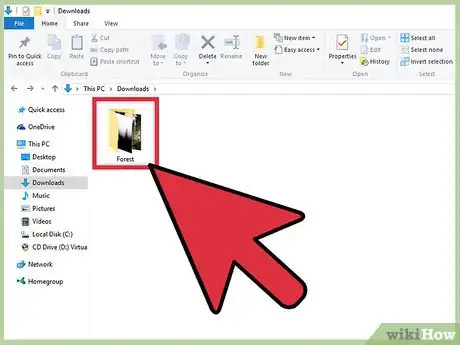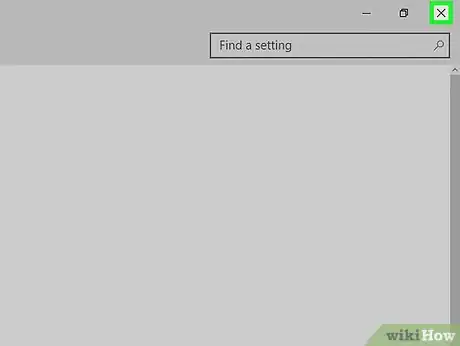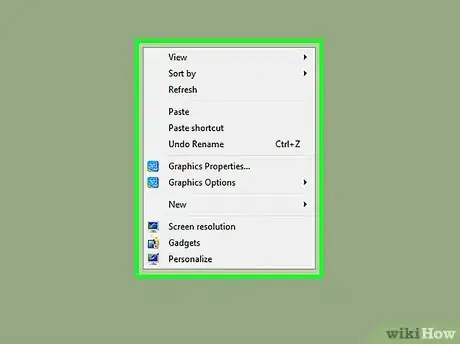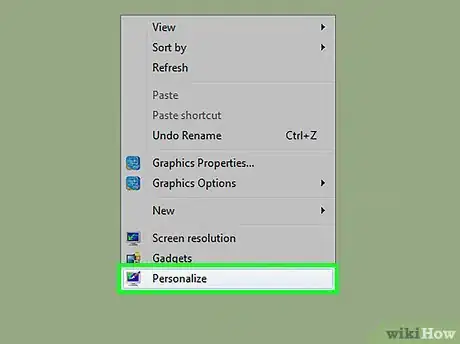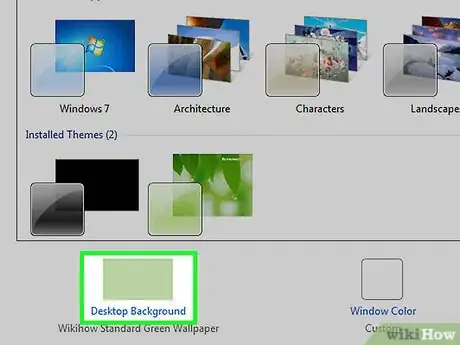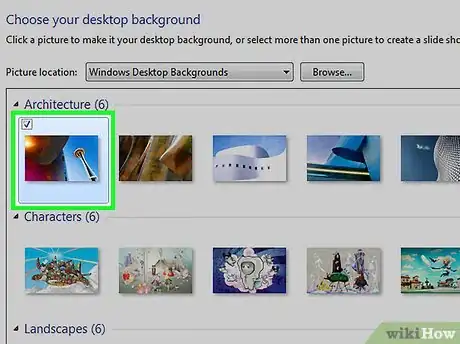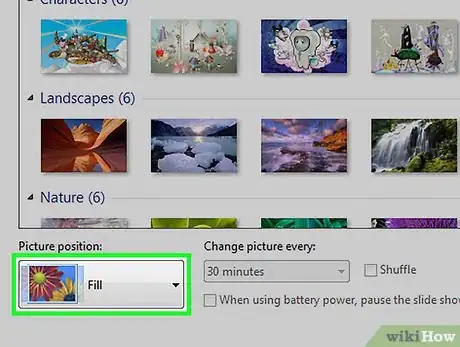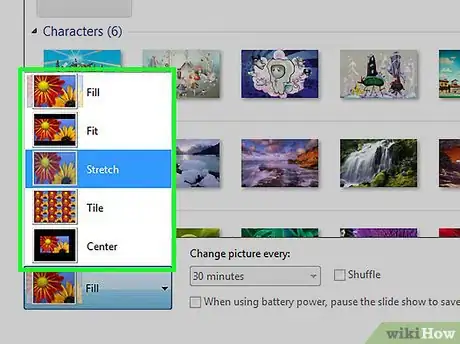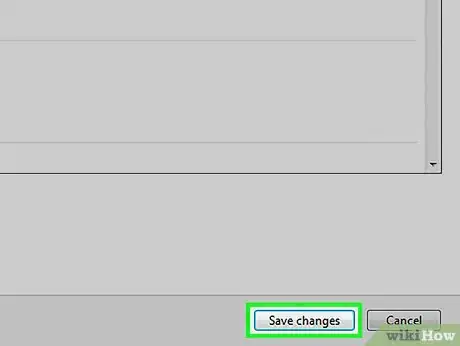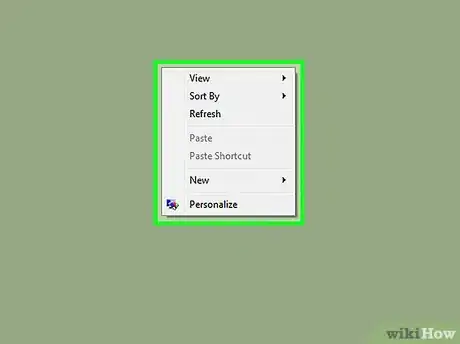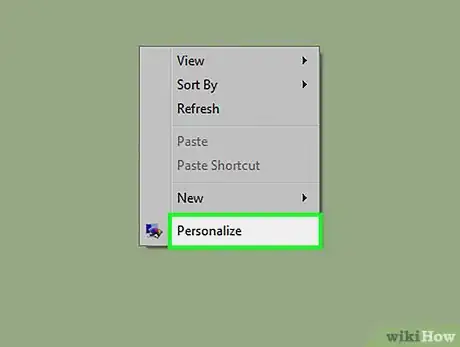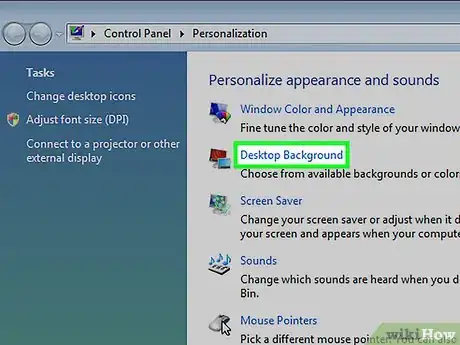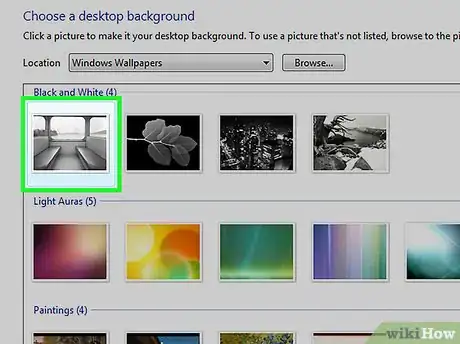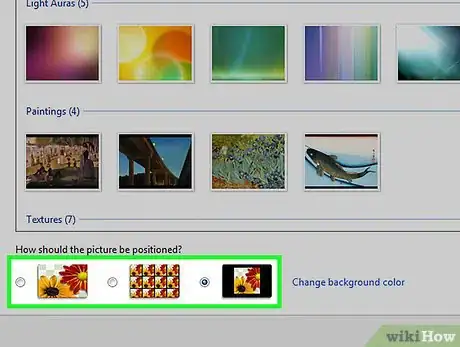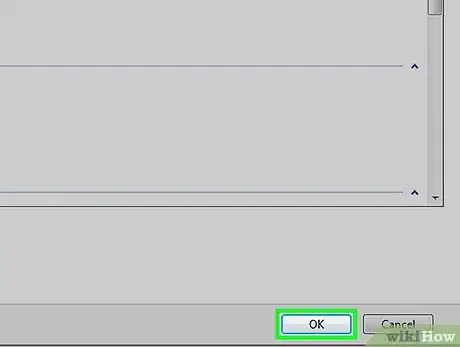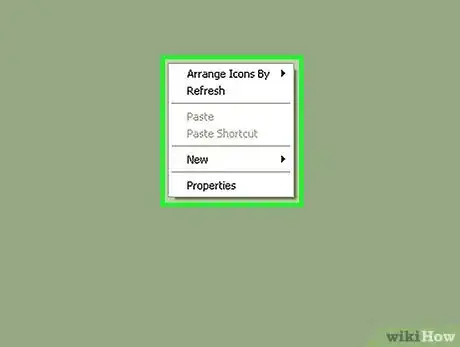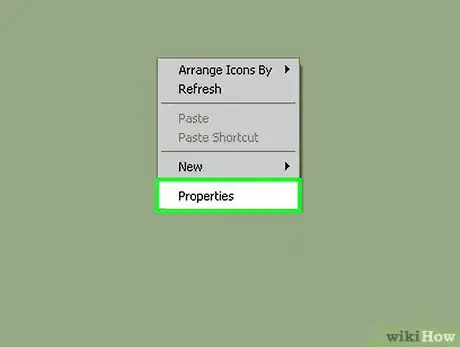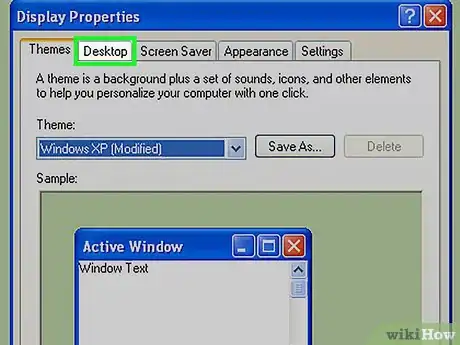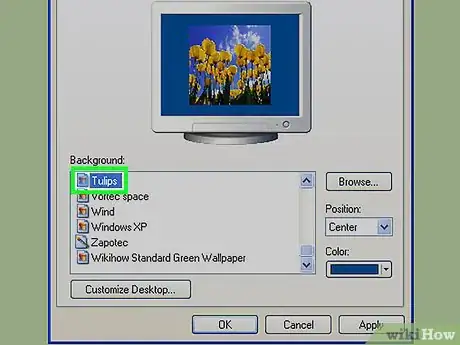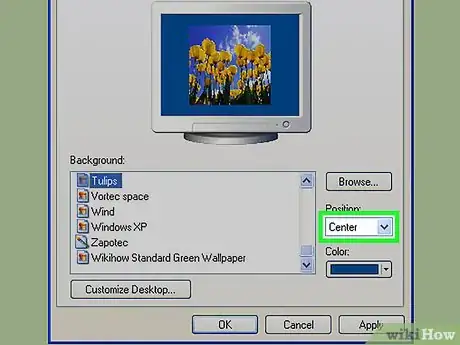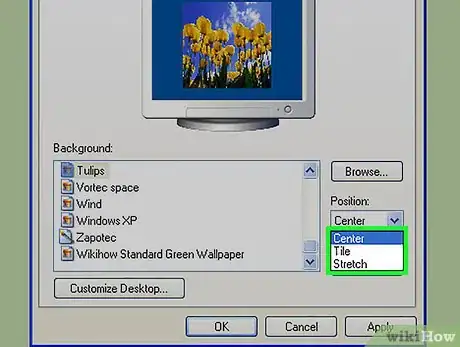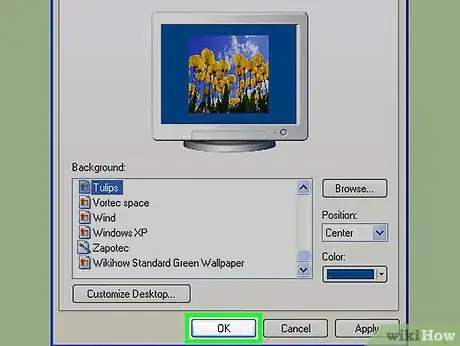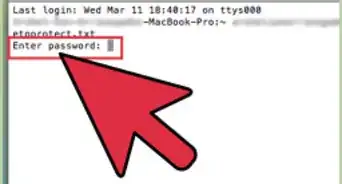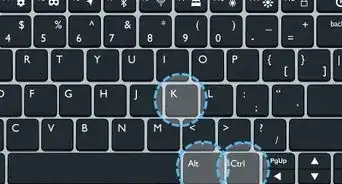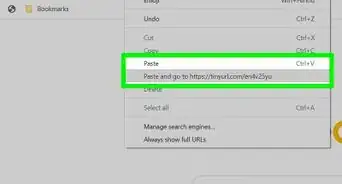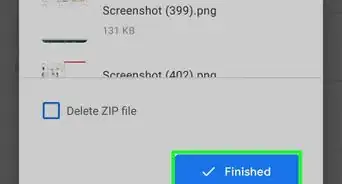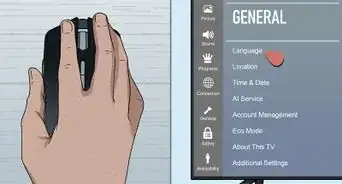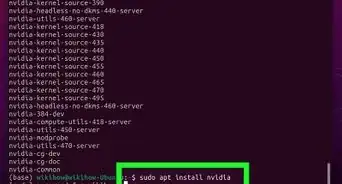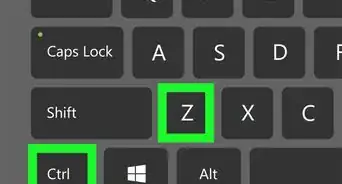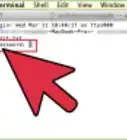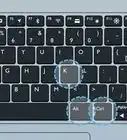Personalize your Windows background with this user-friendly guide
X
This article was co-authored by wikiHow staff writer, Jack Lloyd. Jack Lloyd is a Technology Writer and Editor for wikiHow. He has over two years of experience writing and editing technology-related articles. He is technology enthusiast and an English teacher.
This article has been viewed 608,977 times.
Learn more...
This wikiHow teaches you how to alter the image displayed on your PC's desktop background (also known as a wallpaper), for any model of Windows you may have.
Steps
Method 1
Method 1 of 5:
Using Windows 11
-
1Right-click an empty space on the desktop. This will open a menu with various options.
-
2Click Personalise. This should be the last option in the menu, and will open personalisation settings in the settings app.Advertisement
-
3Click the option that says Background to enter the background settings. This will be at the top of the list.
-
4Configure your background. You can choose the display option from the different types below:
- Picture - Allows you to select a picture to display on your desktop. There will be a selection of stock images, and images from your computer listed. Alternatively, click Browse and choose a picture from your computer files. Furthermore, you can use the dropdown menu next to "Choose a fit" to change the way the picture is displayed (e.g., filling your entire screen).
- Solid color - Allows you to select a solid color (e.g., gray) to fill your Windows desktop.
-
Slideshow - Displays a series of photos from your computer's default "Pictures" folder in a slideshow. You can change this folder by clicking Browse and selecting a new folder. You can also choose the frequency of how often the image is changed, under the dropdown menu next to 'Change picture every:'. Finally, you can choose to shuffle the order of the pictures, or to turn off the slideshow on battery power (this will help conserve your battery life).
- It's best to make new folder dedicated for your desktop background slideshow that contains the pictures you want as a background. For example, you could create a folder called "Desktop Slideshow" under the "Pictures" section of File Explorer, and save all your background images here.
Advertisement
Method 2
Method 2 of 5:
Using Windows 10
-
1Right-click an empty space on the desktop. Doing so will prompt a drop-down menu.
-
2Click Personalize. This option is at the bottom of the drop-down menu.
-
3Click the box beneath the "Background" heading. You can click one of the following options:
- Picture - Allows you to select a picture to display on your desktop. A bunch of recent and sample pictures will be listed and can be used by clicking one. You can also click Browse and choose a picture if you don't like the stock photos. Furthermore, you can click the box beneath "Choose a fit" to change the way the picture is displayed (e.g., filling your entire screen).
- Solid color - Allows you to select a solid color (e.g., gray) to fill your Windows desktop.
-
Slideshow - Displays a series of photos from your computer's default "Pictures" folder in a slideshow. You can change this folder by clicking Browse and selecting a new folder.
- It's best to make new folder dedicated for your desktop background slideshow that contains the pictures you want as a background. For example, you could create a folder called "Desktop Slideshow" under the "Pictures" section of File Explorer.
-
4Exit the "Personalization" window to see your new background. To do so, click the X in the top-right corner of the page. Your selected wallpaper option will have automatically been applied to the desktop when you changed the settings.
Advertisement
Method 3
Method 3 of 5:
Using Windows 7 and 8
-
1Right-click an empty space on the desktop. Doing so will prompt a drop-down menu.
-
2Click Personalize. This option is at the bottom of the drop-down menu.
-
3Click "Desktop Background". This link should be in the bottom-left corner of the window.
-
4Click a picture. Doing so will select it as your desktop background.
- You can also click the Windows Desktop Backgrounds dropdown menu near the top of the window to pick a different pictures folder (e.g., "Pictures").
- If you want to look for a specific picture, click Browse.
- Clicking the checkbox in the top-left corner of two or more pictures will place them on a slideshow rotation. You can change the default time between photos and transition style from the bottom of the window.
-
5Click the box beneath the "Picture position" heading. You'll see options for displaying your picture here. A few common options include:
- Fill - Your picture will take up the whole screen.
- Tile - Multiple thumbnails of your picture will display in a grid on your desktop.
- Center - Your picture will be centered in the middle of your screen with a black border.
-
6Click a picture position option.
-
7Click Save changes. It's at the bottom of the "Desktop Background" window. Your changes will be applied.
Advertisement
Method 4
Method 4 of 5:
Using Windows Vista
-
1Right-click an empty space on the desktop. Doing so will prompt a drop-down menu.
-
2Click Personalize. This option is at the bottom of the drop-down menu.
-
3Click "Desktop Background". It's the second link from the top of this window.
-
4Click a picture. Doing so will select it as your desktop background.
- You can also click the Windows Wallpapers box near the top of the window to pick a different pictures folder (e.g., "Pictures").
- If you want to look for a specific picture, click Browse.
-
5Click a picture positioning option. This section is beneath the "How should the picture be positioned?" heading. Your options (from left to right) include a full-screen version of the picture, a grid comprised of your photo, and a centered version of the picture.
-
6Click OK. It's at the bottom of the window. Doing so will apply your selected picture to the desktop background.
Advertisement
Method 5
Method 5 of 5:
Using Windows XP
-
1Right-click an empty space on the desktop. Doing so will prompt a drop-down menu.
-
2Click Properties. It's at the bottom of the drop-down menu.
-
3Click the Desktop tab. You'll see this at the top of the "Properties" window.
-
4Click a desktop image option. You'll see several options below the "Background" heading; clicking one will preview it in the window near the top of the page.
- You can also click Browse to pick a custom picture.
- For a solid color, click None as the background. Then click the box below "Color" in the bottom-right corner of the window, and pick a color.
-
5Click the box below the "Position" heading. It's at the bottom-right side of the "Properties" window. You'll see three options here:
- Stretch - Your picture will take up the whole screen.
- Tile - Multiple thumbnails of your picture will display in a grid on your desktop.
- Center - Your picture will be centered in the middle of your screen with a black border.
-
6Click a picture position. Doing so will apply the position to your picture.
-
7Click OK. It's at the bottom of the window. Doing so will save your changes.
Advertisement
Community Q&A
-
QuestionThe monitor screen goes black and I don't know if it is turned off or asleep. I am afraid that I will accidentally push the power button when it is in sleep mode and it will crash the system.
 Jacob RubeschCommunity AnswerIf you don't know whether or not your computer is asleep or turned off, just try to type something on the keyboard. If the monitor stays black, then the computer is off, if the monitor turns back on, it was asleep.
Jacob RubeschCommunity AnswerIf you don't know whether or not your computer is asleep or turned off, just try to type something on the keyboard. If the monitor stays black, then the computer is off, if the monitor turns back on, it was asleep. -
QuestionWhere do I create a folder?
 Community AnswerYou can create the folder anywhere on your PC but it is recommended to create it in Pictures.
Community AnswerYou can create the folder anywhere on your PC but it is recommended to create it in Pictures. -
QuestionMy settings are managed by my organization, so how do I change that?
 Liam TownsleyCommunity AnswerYou won't be able to change your background as your employer or school has disabled your access to do so.
Liam TownsleyCommunity AnswerYou won't be able to change your background as your employer or school has disabled your access to do so.
Advertisement
Warnings
- If you're using a computer with user restrictions (e.g., a school computer or a work computer), you may not be able to change the background.⧼thumbs_response⧽
Advertisement
Things You'll Need
- Device running Windows
About This Article
Article SummaryX
1. Right-click the desktop.
2. Click Personalize.
3. Click Background.
4. Select an option from the "Background" menu.
5. Select a color or photo.
Did this summary help you?
Advertisement
